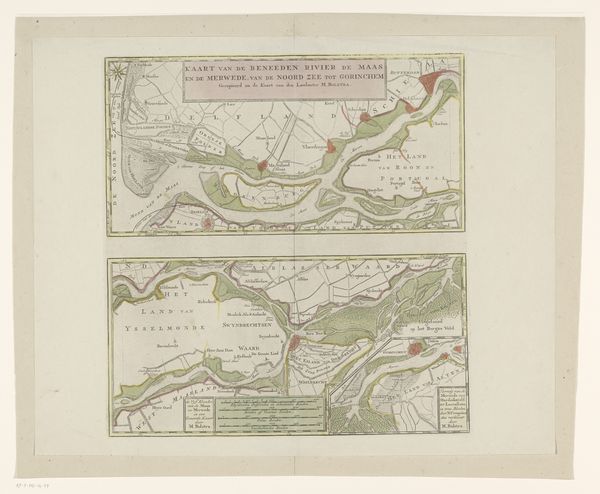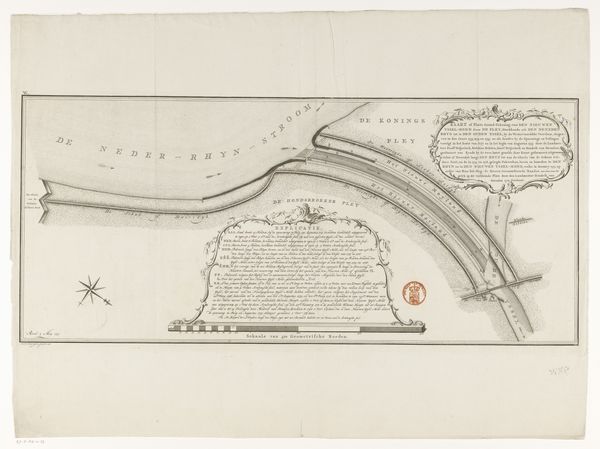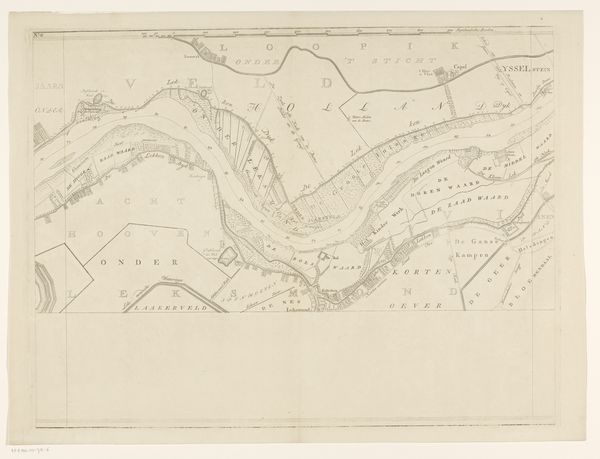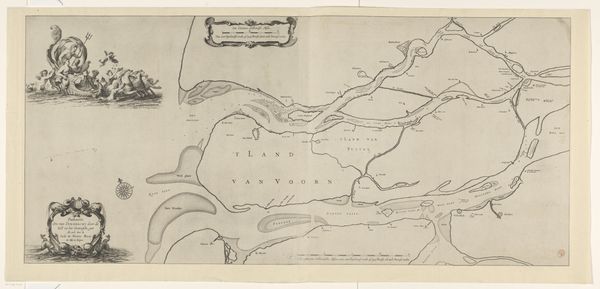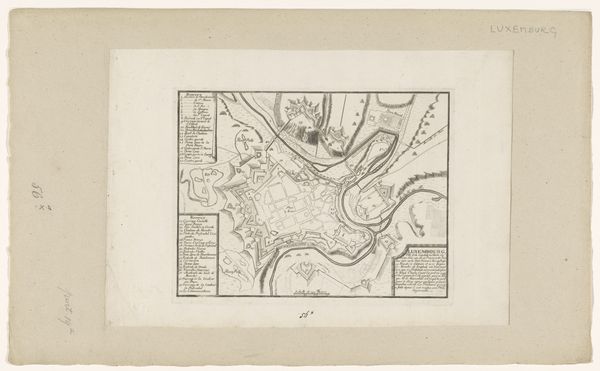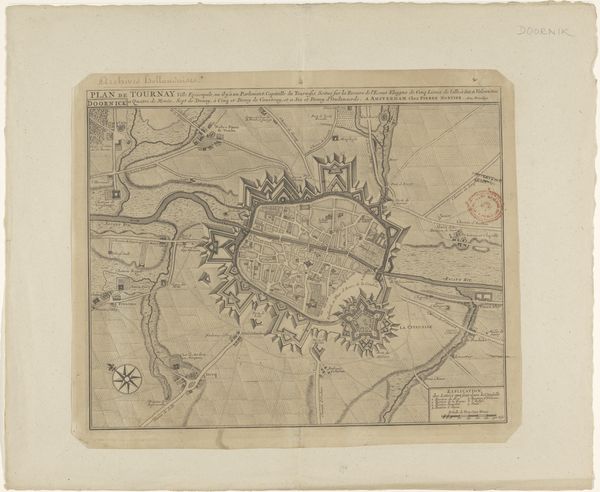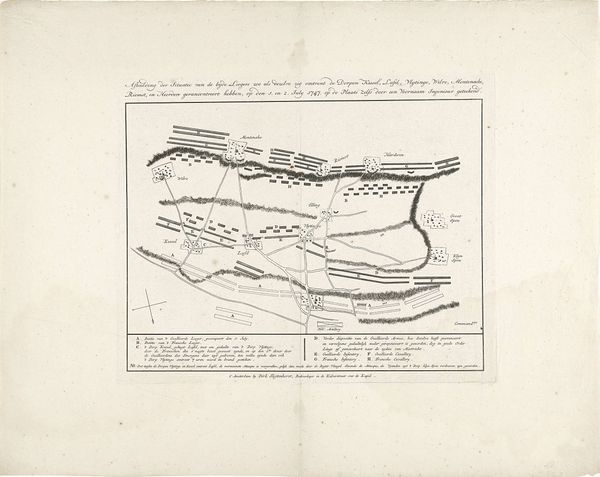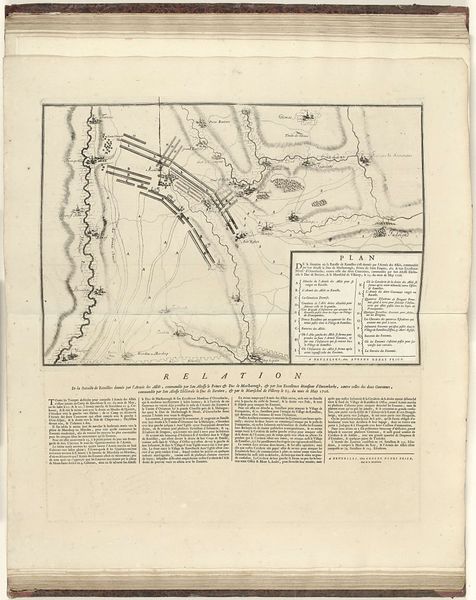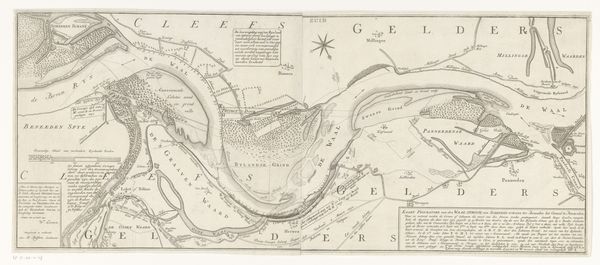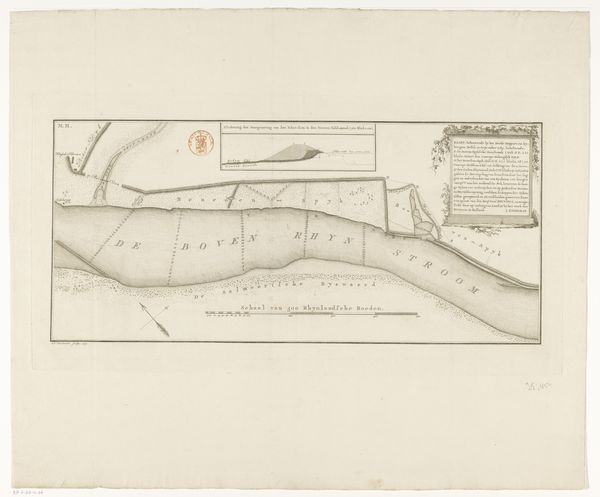
drawing, print, ink, engraving
#
drawing
#
baroque
#
dutch-golden-age
# print
#
landscape
#
river
#
ink
#
geometric
#
cityscape
#
engraving
Dimensions: height 324 mm, width 523 mm
Copyright: Rijks Museum: Open Domain
Curator: This detailed engraving, "Kaart van de Boven-Rijn bij Schenkenschans," or "Map of the Upper Rhine near Schenkenschans," was created after 1699, meticulously rendered in ink. Editor: Immediately, I'm drawn to the precision. It feels incredibly ordered, but also strangely serene, like a landscape captured under glass. The line work is so delicate! Curator: It’s the kind of image that highlights the intense labor involved in mapmaking. Think of the surveying, the engraving, and the printmaking all part of an interconnected system to produce such detailed documentation. Editor: Absolutely, but even as documentation, it carries an inherent artistic license. The mapmaker isn't just recording; they're composing, framing, interpreting, creating a worldview. See how the river dominates, it becomes the lifeblood of the composition and possibly also the region? Curator: Exactly! And consider the social context: maps like these served strategic purposes—navigation, military planning, colonial expansion. This isn't just about art; it's about power. We see how a seemingly neutral depiction is intrinsically linked to material interests. Editor: I'm sensing both authority and vulnerability in it. Knowing this piece reflects Dutch Golden Age cartography, there's that potent push-pull between asserting dominion over a landscape while still being so intimately reliant on its forces and offerings. Curator: The Baroque influence certainly speaks to that dynamic tension, doesn't it? It balances precision with the more expressive qualities inherent in ink drawing. And if you consider the consumption of these maps—displayed in homes of merchants or military strategists—it underlines how art functions as both a tool and a status symbol. Editor: Yes, seeing the sharp contrasts between order and flowing elements creates such visual interest, it has me thinking about how something can be simultaneously an attempt at mastering nature while being humbled by its scale and indifference. Fascinating. Curator: A useful lens, indeed. It provides a material understanding of production, utility and dissemination. Editor: Well said, I must admit that even its implied textures captivate me on some deeply poetic level, and I suppose I'm left with such an urge to imagine myself wandering that space and time.
Comments
No comments
Be the first to comment and join the conversation on the ultimate creative platform.
